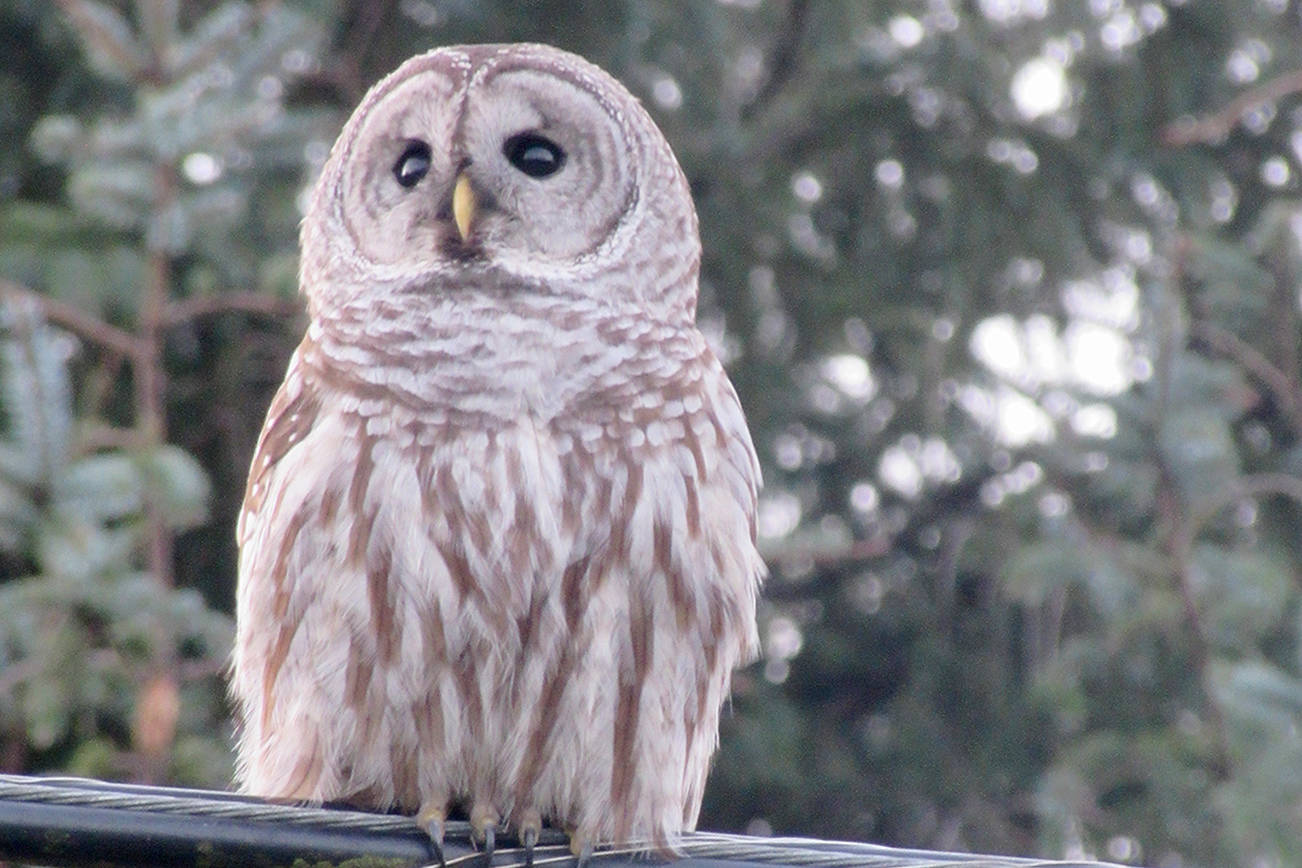This cousin to the infamous Northern Spotted Owl is often mistaken for the more famous bird, but this is more of a success story than the Spotted Owl. It is thought that the battle for the owl territories, in the Pacific Northwest at least, has already been decided, with the Barred Owl taking over from the Spotted Owl. The Barred Owl is a bit larger, does not require the old growth forest that the Spotted Owl needs, and it’s just a tougher bird. This bird is sitting out in plain sight during daylight hours, easily visible to humans and crows, something the very shy Spotted Owl would never do. I took this photo just above my yard, without flushing the bird.
General Description
The Barred Owl has become the poster child for survival of the species, shouldering it’s shy cousin out of the picture in the few areas they actually overlap. It is a medium-sized owl without ear tufts, with brown eyes, gray-brown feathers, and the distinguishing markings of horizontal barring on its upper breast and vertical streaking on the belly. The demarcation between horizontal and vertical is very noticeable. This owl is often found out and about in daylight, and often remains in place when approached, up to a point. As with all owls, it flies silently thanks to the design of its feathers.
Habitat
This owl may inhabit swampy areas, second-growth forest and mixed broadleaf or coniferous woods, and can be found in suburban yards, as well as parks, cemeteries, and open fields. They do well in logged areas too, and are found at higher elevations than a Spotted Owl.
Behavior
Barred Owls hunt more frequently at night but can also be found during the day. They have a wide repertoire of calls and vocalizations and a pair can often be heard calling and answering back and forth on their territory. They are sit-and-wait predators, so it may appear they don’t move a lot; they are just waiting for something to move….no wasted energy.
Diet
Barred Owls will eat almost anything in the small mammal category, as well as birds, frogs and even large invertebrates.
Nesting
They are monogamous and form long-term pair bonds maintained throughout the year. They defend their territory year-round, though on the east side of the Cascades the males may leave after the breeding season. Barred Owls nest in natural tree hollows, in old hawk, squirrel and crow’s nests, and in artificial nest boxes. They add little or no material to the nest. The female typically incubates 2-3 eggs for 28-33 days, while the male brings her food. Once the young hatch, the female broods for about two weeks, and the male brings food to both the female and the young. At 4-5 weeks, the young leave the nest and venture onto nearby branches. Only then does the female also begin to feed herself and the young. Young Barred Owls begin to take short flights at 10 weeks and longer sustained flights at 12 weeks.
Migration
Barred Owls do not migrate but may wander from their nesting territories when prey is scarce, such as when snow is deep. Young birds also disperse in fall.
Conservation Status
Barred Owls are widespread and common throughout most of their range. Their range expanded dramatically to the west in the second half of the 20th Century. They were first recorded in eastern Washington in 1965 and in western Washington in 1973. Breeding in western Washington was first recorded in 1975. The Barred Owl’s expansion into the Spotted Owl’s range has created additional challenges for this already troubled species. Barred Owls out-compete Spotted Owls, and in some instances even hybridize with them, both sources of concern. Currently, however, there are no measures to control Washington’s growing population of Barred Owls, with the possible exception of talks of shooting the interlopers to “even the odds” so to speak.
When and Where to Find on Grays Harbor
Barred Owls can be found year-round in most lowland and montane forests throughout Washington. They are believed to be most common in western Washington and on either side of the Cascades.


